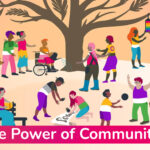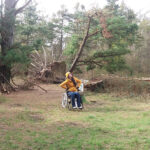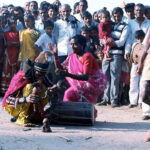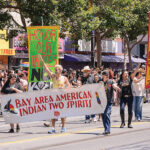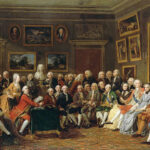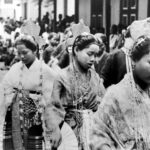Trans & Nonbinary Glossary
This glossary is provided as a gesture to enable anyone to refer to trans and nonbinary people, and our lived experiences, correctly. Terms may fall in and out of use as our communities evolve to understand ourselves better.
Please feel free to let us know if something is not here that you’d like listed, or if you think we still have something listed, that should now be removed/changed.
A
- AFAB (Assigned Female at Birth): A person whose sex was assigned as female when they were born.
- AMAB (Assigned Male at Birth): A person whose sex was assigned as male when they were born.
- Ally: A person who supports and advocates for the rights and dignity of transgender and gender-diverse individuals.
B
- Binder: A garment used to flatten the chest, often worn by transmasculine individuals.
- Bigender: A person whose gender identity encompasses two genders, either simultaneously or alternating between them.
C
- Cisgender (Cis): A Latin prefix, which in this case is designating a person whose gender identity aligns with the sex they were assigned at birth.
- Coming Out: The process of recognising, accepting, and/or disclosing one’s gender identity or sexual orientation to oneself or others.
D
- Dead Name (Dead Naming): A name assigned at birth that a transgender person no longer uses. Using a person’s dead name is considered disrespectful unless explicitly permitted. It’s considered dead, when it’s shed, or not used any more, in favour of a now, actual name.
- Drag: Essentially an art form and entertainment/parody. Many people wrongly assume that Drag Queens/Kings are always members of the trans community, which is not accurate. Many drag performers don’t have any connection with the trans community. They can be people who are either members of the LGBT community or not. There is no set definition. Some performers can of course be trans, however the distinction is that being involved with drag, doesn’t make you trans, however it doesn’t exclude you either.
- Dysphoria (Gender Dysphoria): Distress caused by the discrepancy between a person’s gender identity (how they see their gender in relation to the world) and their assigned sex at birth, or physical characteristics.
F
- Femme: A gender expression that is typically feminine; can be used by people of any gender.
G
- Gender: A complex social and cultural construct related to identity (everyone has one), roles, and expectations, distinct from biological sex. Not always binary, despite western insistence.
- Gender Binary: The imposition of two social genders in western society, which stems from the rigid, and often oppressive categorisation that came out of the Enlightenment. Many cultures recognise more than two genders, however, and indeed the western world was a lot more fluid once upon a time. Certainly before missionaries, and colonialism.
- Gender Expression/Presentation: How a person outwardly expresses their gender identity (something we all do, e.g., through clothing, behaviour, voice).
- Gender Identity: A person’s internal sense of their own gender (e.g., man, woman, nonbinary), in relation to society.
- Gender Nonconforming (GNC): A person whose gender expression does not align with societal binary expectations based on their assigned sex.
- Genderfluid: A gender identity that may shift or change over time.
- Genderqueer: A gender identity that falls outside the traditional categories of male and female.
- GRC (Gender Recognition Certificate): This is a UK document, which after review from a panel, allows a trans individual to change the gender marker on their birth certificate. This is a long, currently arduous, and inadequate service that needs updating promptly, however individuals in the UK can change their name legally with very little trouble, by signing and declaring their own name change on a Deed poll document. This can then be used to change all forms of identification.
- GRS (Gender Reassignment Surgery): Which used to be called, SRS or ‘Sex Reassignment Surgery’. These are both the same thing, however people describe the process differently as it fits their understanding of gender and sex. Essentially, both are surgical procedures designed to alter physical attributes, for trans individuals.
H
- HRT (Hormone Replacement Therapy): Medical treatment in which hormones are taken to align physical characteristics with gender identity.
M
- Misgendering: Referring to someone using words (e.g., pronouns, dead names) that do not correctly reflect their gender identity.
- MTF (Male to Female): A older term used to describe a transgender woman. Someone assigned male at birth, who identifies as female.
N
- Neopronouns: A set of gender-neutral pronouns outside traditional she/he/they (e.g., xe/xem, ze/hir).
- Nonbinary: An umbrella term for gender identities that are not exclusively male or female (the binary)
P
- Passing: When a transgender person is perceived by others as the gender they identify as. Many people seek to ‘pass’, so they may go unnoticed in society, free from harassment, and abuse, however it’s generally considered that for those who do not wish to, passing is not necessary to be a valid trans person. All are valid.
- Pronouns: Words used to refer to someone in place of their name (e.g., she/her, he/him, they/them). There are seven groups of pronouns in the English language, and over 100 individual pronouns.
Q
- Queer: A reclaimed term that can mean a range of non-normative sexual and gender identities. Not all LGBTQ+ people use, or accept, this term.
R
- RLE (Real Life Experience): A period of time (often two years), whereby a trans person who is seeking medical intervention to have their body changed by either hormones, or surgery, must live as their ‘acquired gender’. This is to ensure they are going to be happy with the permanent changes those interventions bring, and to reduce the rate of regret (which is very low).
S
- Sex Assigned at Birth: The classification (typically male, female, or intersex) assigned based on physical anatomy at birth. It’s referred to like this, because assignment at birth does not account for how someone may feel they fit into society, later in their life. Especially since western society (unlike many others), is so limiting.
- Social Transition: The process of changing one’s name, pronouns, clothing, and other gender markers in daily life. Younger people can only undergo social transition. Adults generally begin social transition for two years before physical interventions can be considered.
- Stealth: When a transgender person is not open about their trans identity in some or all contexts. This enables safety, and allows the person in question to quietly live their lives without a being a target of hate and abuse.
T
- They: A singular pronoun that is entirely valid, and proper to use in a sentence. Shakespeare was one of the first people to use singular they.
- Transphobia: Fear, hatred, or discrimination against transgender people. It does not indicate fear of trans people in society, as it so often misquoted, but rather an irrational, all encompassing, rabid, and entirely incomprehensible hatred for a vulnerable minority of people. Like any prejudice, it tends to make people feel more powerful, by punching down.
- Top Surgery: Surgery to remove or enhance breast tissue to better align with one’s gender identity.
- Transgender (Trans): A person whose gender identity does not align with the sex assigned to them at birth.
- Transition: The process a person goes through to live as their true gender identity. This can include social, medical, and/or legal changes.
- Transmasculine: A term for individuals assigned female at birth who identify with masculinity, or as male.
- Transfeminine: A term for individuals assigned male at birth who identify with femininity, or as female.
- Two-Spirit: Two-Spirit people are Indigenous individuals who embody both masculine and feminine spirits, often holding unique cultural, spiritual, and social roles within their communities. The term “Two-Spirit” was created in 1990 as an English umbrella term to reflect the diversity of gender identities and expressions found in many Indigenous cultures across North America, through the ages.



